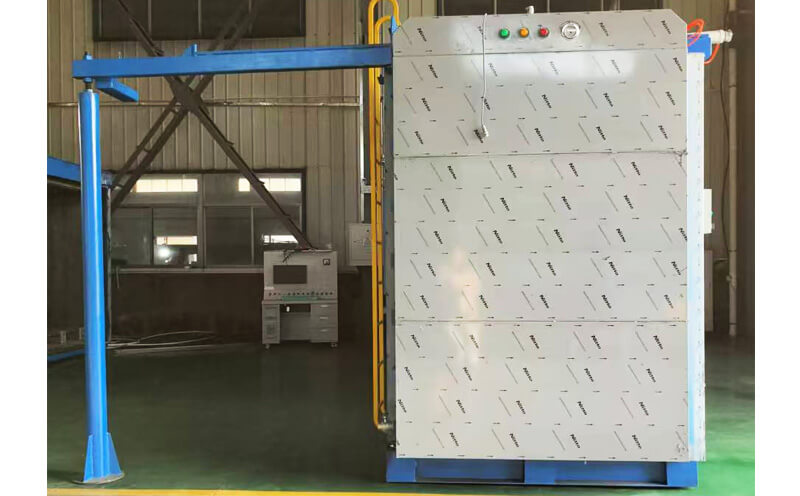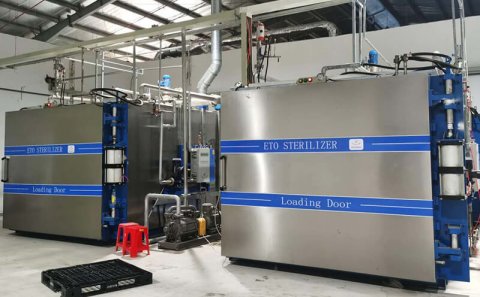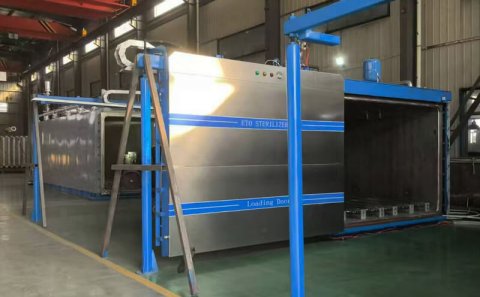
ETO Gas Sterilizer Technology
High pressure steam sterilization technology is to use a sterilizer to heat the generated steam. With the continuous addition of steam pressure, the temperature in the sterilizer will rise, which can reach a high temperature of more than 100 ℃. The high-pressure steam in the high-pressure steam sterilization has the advantages of high latent heat, strong penetration and fast conduction, which can make the protein of microorganism denature or coagulate quickly to reach the sterilization effect.
High pressure sterilization technology is the fundamental technology to ensure the aseptic operation and achieve biological safety in the laboratory. High pressure steam sterilization technology can effectively prevent the contamination of experimental data by miscellaneous bacteria, especially in the experiment requiring strict aseptic operation, sterilization is the key link to the success of the experiment. Now we summarize the use methods and precautions of high-pressure steam sterilizer commonly used in our laboratory as follows for reference.
Sterilization cabinets perform sterilization operations in the laboratory
1. When sterilizing the experimental device in the laboratory, the water level shall be investigated first after the power supply is connected to see whether there is water. The articles to be sterilized shall not be placed too tightly.
2. After opening the power supply of the autoclave, it is necessary to check whether the water level is within the limited scale first. If the water level is too low, the water should be replenished to the appropriate scale in time before use.
3. Set the sterilization temperature and time correctly according to the sterilization data.
4. In the process of sterilization, it is necessary to fully remove the cold air, and then close the vent valve, otherwise the temperature in the pot can not reach the specified temperature, affecting the sterilization effect (non active sterilizer).
5. After the sterilization of the experimental device, do not directly deflate and reduce the pressure, otherwise the liquid in the bottle will boil violently, flush off the bottle plug and overflow, or even cause the container to burst. Do not open the cover until the pressure in the sterilizer is equal to atmospheric pressure.
6. During the high-pressure sterilization, the sterilization personnel should not leave the site, investigate the operation of the instrument at any time, and deal with any situation found at any time.
7. The test tube or the cotton plug of the bottle containing the culture medium shall be wrapped with oil paper or kraft paper to prevent the condensed water from entering.
8. In order to ensure the sterilization effect, the sterilization effect should be checked regularly. The common method is to place sulfur powder (melting point is 115 ℃) or benzoic acid (melting point is 120 ℃) in a tube, and then carry out the sterilization experiment.
If the above substances are melted, it is clarified that the temperature in the autoclave has reached the requirements and the sterilization effect is reliable. The adhesive tape (on which there is a temperature sensitive indicator) used to detect the function of the sterilizer can also be pasted on the outer package of the articles to be sterilized. If the indicator on the adhesive tape changes color, it is also clarified that the sterilization function is reliable.
About disinfection cabinet using EO for sterilization
At present, ethylene oxide is widely used to sterilize medical devices. . ethylene oxide is a flammable and explosive toxic gas, with the molecular formula of C2H4O, which has an aromatic ether smell. At 4 ° C, the relative density is 0.884, the boiling point is 10.8 ° C, and the density is 1.52g/cm3. At room temperature, it is easy to volatilize into a gas, which can cause explosion when the concentration is too high.
Sterilization process consists of three stages:
1. The pre-treatment in precondition room. stage the load is heated and humidified to prepare for sterilization.
2. EO gas sterilization. The load is sterilized with the correct concentration of EO gas at low temperatures.
3. Aeration/degassing. In the aeration stage, the EO gas residues will be removed from product and packaging.
These stages can be performed within the sterilizer chamber or in three separate chambers.
Sterility Assurance Level (SAL)
For Medical Products and Industry
Capacity: 1 m³ ~ 130 m³ customization.
Features: low temperature, efficiently penetrate
Temperature: 30℃~55℃, limit < 58 ℃
Humidity: 40%~80%, enhanced: 20%~99%
EO gas: 100%, 70%, 30%, 20%, 10%, or customization.
Power supply: 380V 50Hz/60Hz, 415V customization
Process: Each Sterilization Cycle Takes 8-10 Hours, And 2 Sterilizer Cycles Can Be Completed In 24 Hours.Ultimately based on PQ
Warranty: Cabinet Guaranteed For 5 Years. 30 Years Service Life.





How To Use ETO Gas Sterilizer...